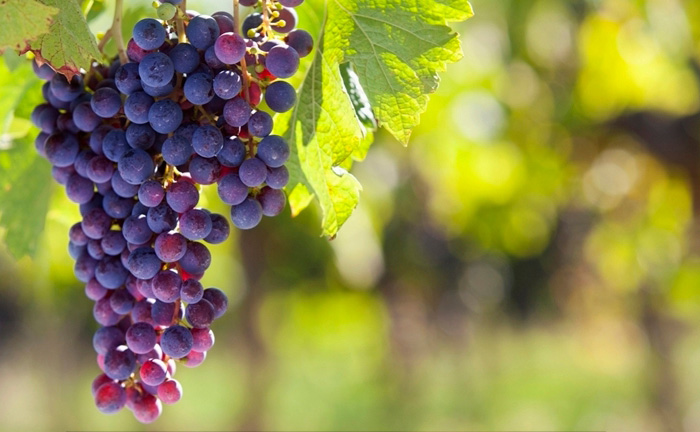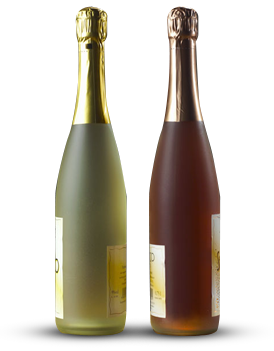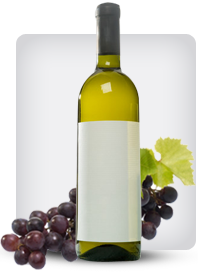

Category: Red Wine
I Love Italian Regional Cuisine – Pairing Umbria Cuisine With Red Wine
Posted onUmbria lies smack dab in the middle of Italy. Even though it doesn’t border the sea, the Tiber River and Lake Trasimeno provide a fine choice of fish and eels. Local specialties include truffles. You won’t go hungry here.
Lepre alla Cacciatora (Cacciatora Style Hare) is a popular, traditional dish. It calls for white wine, cured ham, capers, and several other ingredients. Enjoy it with a Chianti Classico DOCG or a Vino Nobile di Montepulciano DOCG, both from the neighboring region of Tuscany.
Another hunter’s style dish is Pollo alla Cacciatora (Cacciatora Style Chicken) whose central ingredient is easier to find and prepare. The classic preparation calls for salted anchovies and capers. Suggested wine pairings include Chianti DOC or Chianti Classico DOCG or a Nebbiolo-based wine from Piedmont.
Truffles are really popular in this part of the woods. Enjoy a Spaghetti all Nursina (Spaghetti Norcia Style) in which a local pasta is accompanied by these delicious fungi are heated in olive oil with a touch of anchovy and garlic. Barbaresco DOCG from Piedmont is the recommended food pairing.
Don’t think about the park when you’re enjoying Piccioni allo Spiedo (Pigeons roasted on the spit) with the rest of that Barbaresco, a Barbera d’Alba DOC, a Barbera d’Asti DOC also from Piedmont, or an Italian Pinot Nero.
Agnello arrosto (Roast Baby Lamb) is traditionally roasted in the dying embers that remain after bread is baked in a wood oven. You may have to make amends but this dish can still be excellent. Especially if you accompany it by a Barolo DOCG from Piedmont or a Brunello di Montalcino DOCG from Tuscany.
Our final dish Anitra Selvatica con pappardelle (Wild Duck with Broad Noodles) highlights what is perhaps the region’s finest red wine, Montefalco Sagrantino DOCG. You may have to substitute a farm-raised duck for the wild duck, other pasta for the Pappardelle, regular ham for the prosciutto, and other wine for this pricey suggestion. It won’t be the same.
I Love Italian Regional Cuisine – Pairing Apulia Cuisine With Red Wine
Posted onApulia is the heel of the Italian boot. It is located in the southeast corner of Italy on the Adriatic and Ionian Seas. As many other regions of Italy, over the centuries Apulia was constantly invaded. The region’s difficult history has given it a varied cuisine that should meet your fancy. Apulia is known as the Italian granary and the vegetable garden of Italy. Believe it or not, some of the local olive trees are said to be one thousand years old, and still produce great olives. Is it any wonder that so many traditional recipes call for olives or olive oil?
For starters or as a light main dish, try Melanzane Ripiene (Stuffed Eggplant) baked eggplant that has been hollowed out and stuffed with a mixture of its chopped pulp, anchovies, breadcrumbs, capers, olives, and tomatoes. Enjoy this delicacy with a Monica di Sardegna DOC from Sardinia or a Cerasuolo di Vittoria DOCG from Sicily.
Another good starter or light main dish is Lasagnette con Acciughe (Lasagnette with Anchovies). Lasagnette are flat noodles cut from a lasagna sheet. Cook them with salted anchovies, garlic, breadcrumbs, salt, extra virgin olive oil, crushed chili peppers, scallions, ricotta cheese, aged pecorino cheese, and several other ingredients. The recommended wine pairing is a local Primitivo. This is not the place to debate whether or not California Zinfandel is a direct descendant of the Apulia Primitivo grape. And this dish is not made for Zinfandel.
If you like lamb try Agnello al Cartoccio (Lamb Chops in Foil) which are baked in foil or paper with olives and lampasciuoli, wild bitter onions from the mountains of Apulia. Needless to say, look for substitutes at the farmer’s market. Enjoy this dish with a Brunello di Montalcino DOCG from Tuscany, a Barolo DOCG from Piedmont, or a Torgiano Rosso Riserva DOCG from Umbria.
Involtini di Manzo (Braised Beef Rolls) are made from thin slices of boneless ground round that are pounded, and then rolled around a mixture of Italian bacon (pancetta), red wine, olive oil, and several other ingredients. Wine pairing suggestions include Aglianico del Taburno DOC from the neighboring region of Campania, Rosso di Montalcino DOC from Tuscany, or Barbera d’Asti DOC from Piedmont.
More Red Wine Articles
I Love Italian Regional Cuisine – Pairing Campania Cuisine With Red Wine
Posted onCampania is the shin of the Italian boot. Its capital is Naples and if you don’t want to “See Naples and Die” you can always visit upscale Sorrento and Pompeii, frozen in time with the eruption of Mount Vesuvius some two thousand years ago. Campania claims to be the home of pasta and pizza. We do some pasta below.
I’m a real fan of Parmigiana di Melanzane (Eggplant Parmigiana) and Campania has some great recipes. In spite of the dish’s name, tradition calls for more Mozzarella than Parmesan cheese. Suggested wine pairings include the local Aglianico del Taburno DOC, Monica di Sardegna DOC from Sardinia, and Rosso Barletta DOC from Apulia. If you can’t get any of these I would suggest trying a Chianti DOCG or Chianti Classico DOCG from Tuscany.
Another eggplant dish is Pasta ‘Ncasciata (Baked Rigatoni with Eggplant) which also includes some veal, chicken livers, and Mozzarella cheese. The full list of ingredients is fairly long as is the preparation. Purists use grated Pecorino cheese instead of grated Parmesan cheese. Wine pairings include Latium’s first DOCG Cesane del Piglio, Chianti DOCG or Chianti Classico DOCG, and Rosso di Montepulciano DOC also from Tuscany.
Braciole di Maile alla Napoletana (Pork Loin with Garlic) is one of those recipes that requires string or toothpicks to roll up the meat and the fixings. I would be tempted to forget the raisins but I’d keep the pine nuts, garlic, and capers. What about the wines? Suggestions include the local Pollino DOC, the Rosso Canosa DOC from Apulia, also known by the ancient Latin name Canusium, and the local Savuto DOC. The latter is probably the easiest one to find.
Time for some beef, such as round steak. Carne alla Pizzaiola (Beef Pizzaiola) includes fresh tomatoes, oregano, olive oil, garlic, and chopped parsley. Some people including me would add chopped olives and anchovies. Recommended wine pairings include Cerasuolo di Vittoria DOCG from Sicily, Rosso Piceno DOC from The Marches, and Sangiovese di Romagna DOC from Emila-Romagna.
Related Red Wine Articles
I Love Italian Regional Cuisine – Pairing Basilicata Cuisine With Red Wine
Posted onBasilicata is the instep of the Italian boot. This hilly and mountainous region is located in the southwest corner of Italy. Like so many other parts of Italy this region has known a series of conquerors, each of whom has left a cultural and culinary trace. The region is known for caves that have been occupied for thousands of years and have now become trendy tourist attractions, complete with upscale restaurants.
Start your meal with some delicious vegetables. One great dish is Piatto di Erbe alla Lucana (Dish of Herbs Lucana Style) consisting of eggplants, onions, yellow peppers, tomatoes, garlic, olive oil, and a few other ingredients. Start by salting the eggplants to remove their bitter juices. Fry and then simmer the veggies and their accompaniments. This isn’t a quick dish, but you’ll enjoy it whether you are a vegetarian or not. The suggested wine pairing is an Italian Syrah.
Lamb is really popular in Basilicata. Make sure to try Cutturiddi o Agnello in Casseruola (Cutturiddi or Lamb Casserole) which is made from a combination of lamb breast and shoulder with pearl onions, chili peppers, ripe tomatoes, and a few other ingredients. The classic wine pairing is the local Aglianico del Vulture DOC named for the extinct Mount Vulture volcano that gives the wine its special taste.
Maybe you like your lamb baked. Try Agnello e Funghi al Forno (Baked Lamb with mushrooms), ideally made with cardoncelli mushrooms that tend to grow under thistle bushes. The other ingredients include chili peppers and olive oil. Suggested wine pairings include Italian Cabernet Sauvignon, Syrah, and Pinot Nero. I have a sneaking suspicion that Aglianico del Vulture would also work very well.
Nobody will blame us for yet another popular but different local lamb specialty, this time based on leg of lamb. Agnello Venosino (Lamb Venosino style). Other ingredients include asparagus, onions, grated Pecorino cheese, eggs, and olive oil. This delicious dish calls for an Italian Cabernet Sauvignon, or those Piedmont prizes, Barbaresco DOCG and Barolo DOCG.
Let’s not forget chicken. One local dish is Pollo alla Potentina (Chicken Potenza Style), chicken braised in white wine with onions, tomatoes, sweet peppers, and some other ingredients. Recommended wine pairings include an Italian Pinot Nero and a Barbera from Piedmont.
More Red Wine Articles
Learn the Best Health Benefits From Drinking Red Wine
Posted on
Isn’t it wonderful to finally find out that something we like is finally good for us. There have been many articles written recently about the health advantages of drinking red wine. The news people have started calling this phenomena the French Paradox. We all know the French eat diets filled with rich sauces and eat food products rich in creams butter and cheese but yet these people seem to live longer. Through research it has been found that they have a lower incidence of heart disease. Why we may ask? The final result has been thought to be the red wine they drink. In this article I will highlight the benefits of drinking great wine.
Get Free: Wine Health Benefits
First, Researchers have found that wine lowers the cholesterol by changing our blood lipid levels. Wine also makes it very difficult for blood to clump up in our blood vessels to form clots. If there are already clots it may help to dissolve them preventing our risk from stroke. If wine is drunk in moderation it can lower blood pressure. Some studies even went as far as to say red wine can lower our insulin levels. But do keep i mind these researchers are saying yes it is healthy to drink some wine in moderation, but an excess of drinking can cause many issues that will out weigh the good it does.
How to Find: Information About Wine
Secondly, red wine can be a good source of anti-oxidants. It is hard to watch TV without seeing the advantage of aniti-oxidants that are found in fruits. Another benefit from great wine is that doctors have found that it can reduce stomach ulcers.
Third, red wine does not suppress the immune system as does many other alcoholic beverages tend to due. Too much other alcoholic beverages tend to increase our risk of getting sick.
Fourth, red wine has also been found to increase bone mass. This is especially a plus for women who tend to have issues. With so many women fearing the consequences of Osteoporosis red wine could be a pleasant remedy.
Lastly, with the stressful lives all of us live today, and the scientific research that has done drinking 1 to 3 glasses of wine may be just what we need to keep our bodies healthier. It heals both the body and the soul.
More Red Wine Articles
popular posts
-

Vegan-Friendly Cabernet Sauvignon: A Guide to Conscious Indulgence For wine enthusiasts embracing a vegan lifestyle, navigating the world of fine wine can present unexpected challenges
12-20 2025While wine is made from grapes, traditional winemaking often employs animal-derived products in the fining process—a clarification stage that removes suspended particles. The good Read More
-

Organic Pinot Noir from New Zealand: A New World Expression of Elegance New Zealand, a land renowned for its breathtaking landscapes and pristine environment, has carved a formidable reputation in the world of wine
12-19 2025While Sauvignon Blanc from Marlborough remains its global calling card, a quiet revolution has been unfolding in its cooler climes. Here, Pinot Noir has Read More

